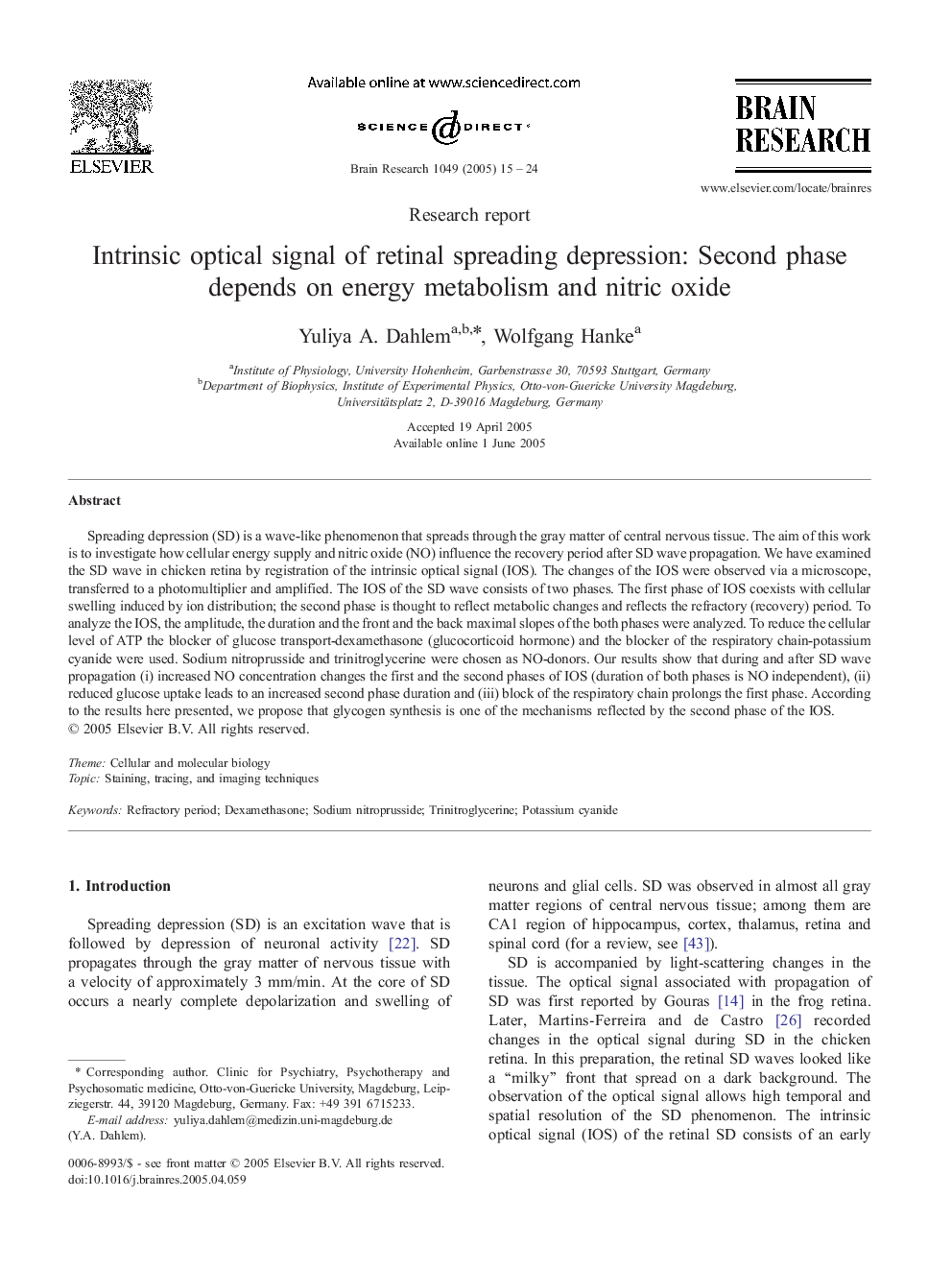| Article ID | Journal | Published Year | Pages | File Type |
|---|---|---|---|---|
| 9416256 | Brain Research | 2005 | 10 Pages |
Abstract
Spreading depression (SD) is a wave-like phenomenon that spreads through the gray matter of central nervous tissue. The aim of this work is to investigate how cellular energy supply and nitric oxide (NO) influence the recovery period after SD wave propagation. We have examined the SD wave in chicken retina by registration of the intrinsic optical signal (IOS). The changes of the IOS were observed via a microscope, transferred to a photomultiplier and amplified. The IOS of the SD wave consists of two phases. The first phase of IOS coexists with cellular swelling induced by ion distribution; the second phase is thought to reflect metabolic changes and reflects the refractory (recovery) period. To analyze the IOS, the amplitude, the duration and the front and the back maximal slopes of the both phases were analyzed. To reduce the cellular level of ATP the blocker of glucose transport-dexamethasone (glucocorticoid hormone) and the blocker of the respiratory chain-potassium cyanide were used. Sodium nitroprusside and trinitroglycerine were chosen as NO-donors. Our results show that during and after SD wave propagation (i) increased NO concentration changes the first and the second phases of IOS (duration of both phases is NO independent), (ii) reduced glucose uptake leads to an increased second phase duration and (iii) block of the respiratory chain prolongs the first phase. According to the results here presented, we propose that glycogen synthesis is one of the mechanisms reflected by the second phase of the IOS.
Keywords
Related Topics
Life Sciences
Neuroscience
Neuroscience (General)
Authors
Yuliya A. Dahlem, Wolfgang Hanke,
